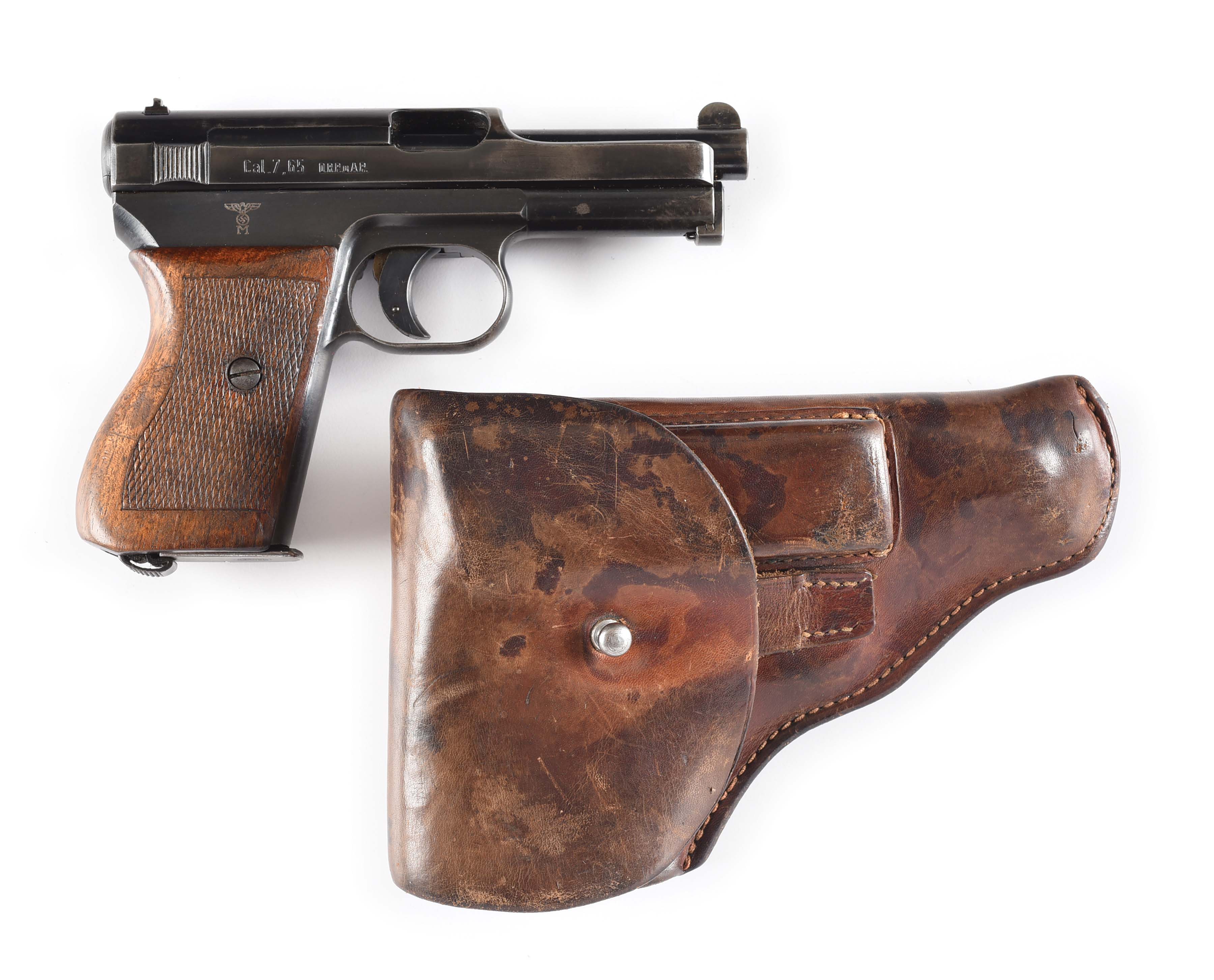

#MAUSER 1934 SERIAL NUMBERS SERIAL NUMBER#
The last variation, of some 32,000 intermittently numbered pistols in a serial number range of about #886,000 to #952,000, has the three-line device on the left side of the slide and bears an Eagle/WaA135 acceptance and the Eagle/N proofs. The cross hatched machining inside the top sight channel is no longer there. The polish of these pistols is rougher and the military 'dusk blue' is now in evidence. On pistols after #855,000 the left side of the slide now has a three-line device stamped along with the Banner. These pistols have an Eagle/135 acceptance and Eagle/N proofs as before. The fourth variation consists of 31,000 intermittently numbered pistols from around #790,000 to #886,000. The high quality finish of the earlier pistols starts to decline in this production segment. These bear an acceptance mark of Eagle/135 on the left rear trigger guard web and the two Eagle/N firing proofs on the right side.
#MAUSER 1934 SERIAL NUMBERS SERIAL NUMBERS#
The third Army variation of some 4,000 pistols ranged in intermittent serial numbers from about 745,000 to about 790,000. The finish on these pistols is also of the first quality. These have an Eagle/655 WaA (Army acceptance) on the left rear trigger guard web and the Eagle/N firing proofs on the right rear trigger guard web and on front of right slide, but have no proof mark on the left rear grip tang. Subsequent orders were placed by the Army throughout the war, along with pistols procured by the Police and Kriegsmarine, with almost 24% of the total production of 252,000 pistols going to the commercial market.Ī second Army variation of about 5,000 pistols consisted of pistols whose serial numbers ranged, intermittently, from about 712,000 to about 745,000. Also a small Army Test Proof stamp was stamped on the left rear grip tang. These pistols are marked with an Eagle/655 inspection stamp on the left rear trigger guard web, a factory firing proof Eagle/N on the right rear trigger guard web and at the front of the right slide. The German Army began HSc procurement with an initial order for 3,000 pistols in early 1941, beginning with serial number 701,345, and, intermittently, ending about #712,000. At approximately serial number 701345 the grip screws were relocated upward to a more central and sturdier position. All these early low grip pistols are today very rare. Approximately half of this initial production was purchased by Nazi Germany's Kriegsmarine. The first 1350 pistols were made for the commercial market and, because of the low positioning of the grip screws, have become known as the 'Low Grip Screw' variety. The early pistols have well-made wooden grips, and are highly polished and richly blued. Production began in late 1940 at serial number 700,000, as an extension of the serial number range of the Mauser Model 1934 pistol, a much more difficult pistol to manufacture. HSc pistols used by the Luftwaffe or Waffen-SS were procured from Army and police stocks. It was procured initially by the navy (Kriegsmarine) soon followed by the Army and police. It competed with the contemporary German Walther PPK and PP and Sauer 38H for police and military use. The Mauser HSc was originally intended as a commercial pistol. It features a semi-exposed hammer, double-action trigger, single-column magazine, and a spring surrounding the barrel. Production was continued in 1945–46 during the French occupation and, later, from 1968 to 1977 by Mauser. The designation HSc stood for Hahn Selbstspanner ('self-cocking hammer') Pistole, third and final design 'C'. The Mauser HSc is a 7.65mm pistol made in Nazi Germany during World War II and post-war. These markings are as follows, 'MAUSER - 7.65' This stamping indicates that the manufacturer of the pistol is Mauser. 1914 Mauser Pistol Serial Number Range The photograph on the left is of the markings that are found on the right side of the slide of this pistol. After the war, production resumed starting at number 200000 and ultimately went over 426,000, which included the so-called 1910/34. Serial numbers of the original production started at 1 and went to c. In any case, that gun is referred to as the Post-War (WWI) Commercial 1910, and is the most common of the.25 caliber Mauser pocket pistols.

World War II, First Indochina War, Burundian Civil War Ĩ-round detachable box magazine (.32 ACP)ħ-round detachable box magazine (.380 ACP)


 0 kommentar(er)
0 kommentar(er)
